
Zainul Abedin, also known as Shilpacharya was a prominent Bangladeshi painter. He became well known in 1944 through his series of paintings depicting some of the great famines in Bengal during its British colonial period. After the Partition of Indian subcontinent he moved to East Pakistan. In 1948, he helped to establish the Institute of Arts and Crafts at the University of Dhaka. The Indian Express has described him as a legendary Bangladeshi painter and activist. Like many of his contemporaries, his paintings on the Bengal famine of 1943 are viewed as his most characteristic works. His homeland honored him with given the title "Shilpacharya" "Great teacher of the arts" for his artistic and visionary attributes. He was the pioneer of the modern art movement that took place in Bangladesh and was rightly considered by Syed Manzoorul Islam as the founding father of Bangladeshi modern arts, soon after Bangladesh earned the status of an independent republic.
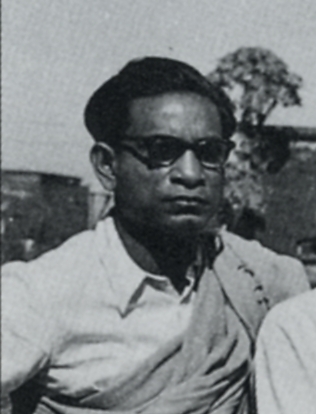
Quamrul Hassan was a Bengali artist. Hassan is referred to in Bangladesh as Potua, a word usually associated with folk artists, due to his down to earth style yet very modern in nature as he always added Cubism other than the folk style to his artworks. In addition to his artistic legacy, two of Hassan's work have come to be part of Bangladesh's political history. The first of this is a monstrous rendition of Yahya Khan, the Pakistani president who ordered genocide in Bangladesh. The second was just before his death, mocking the then dictator of Bangladesh, Hossain Mohammad Ershad. This sketch was titled Desh aaj bisshobeheyar khoppre.

Sheikh Mohammed Sultan, popularly known as S M Sultan, was a Bengali decolonial artist who worked in painting and drawing. His fame rests on his striking depictions of exaggeratedly muscular Bangladeshi peasants engaged in the activities of their everyday lives. Sultan's early works were influenced by western technics and forms, particularly impressionism, however, in his later works particularly, works exhibited in 1976, we discover there is a constant temptation to decolonize his art technics and forms.
Zahoor ul Akhlaq was a pioneering artist from Pakistan. He is known for his approach to painting, sculpture, design and architecture, as well as his teaching at the NCA in Lahore.
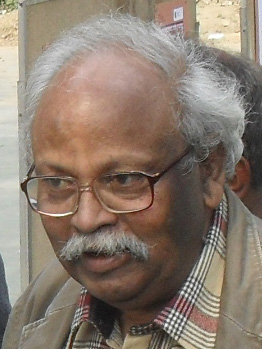
Rafiqun Nabi, better known as Ranabi, is a Bangladeshi artist and cartoonist. He is best known for creating Tokai, a character symbolizing the poor street boys of Dhaka who lives on picking things from dustbins or begging and having a knack of telling simple yet painful truths about current political and socio-economic situation of the country. He was awarded Ekushey Padak in 1993 by the government of Bangladesh.

Arifur Rahman is a Bangladeshi-Norwegian political cartoonist, illustrator and animator. He is a self-taught cartoonist who is renowned for his contribution to cartoons both on the internet and in print media. In Bangladesh, he is best known as "Cartoonist Arif" for anti-corruption cartoons. He's won multiple awards for Anti-Corruption cartoons from Transparency International Bangladesh and the Daily Star. He was the first and former guest cartoonist of International Cities of Refuge Network (ICORN). He is a publisher of cartoon magazine Toons Mag and the organizer of international cartoon contests and exhibitions.

Syed Jahangir was a Bangladeshi painter. He was awarded Ekushey Padak by the Government of Bangladesh in 1985. He served as the department head of the Arts Faculty at Shilpakala Academy in 1977. His notable paintings include Attmar Ujjibon, Ullas, Dhoni, Ojana-Oneshya and Osoni-Sangket.
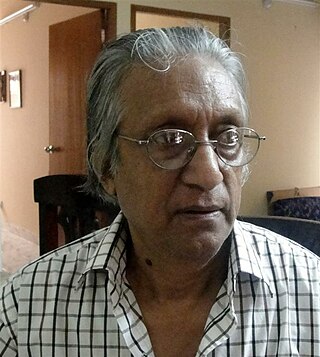
Abdus Shakoor is a Bangladeshi painter and calligrapher.
Khan Mohammed Mustapha Khalid is a Bangladeshi architect. He is considered one of the leading contemporary architects of Bangladesh. He is also an artist, multi instrumentalist-singer and painter. He is the editor of quarterly DOT: Journal on Art & Architecture, one of the prominent architecture magazine of Bangladesh.

Murtaja Baseer was a Bangladeshi painter and artist known for his abstract realism themed works. He was also a poet, author, researcher, numismatist, and filmmaker. Baseer was awarded the Ekushey Padak, Bangladesh's second highest civilian honor, in 1980, and the Swadhinata Padak, or Independence Day Award, Bangladesh's highest state award, in 2019.

Qayyum Chowdhury was a Bangladeshi painter. Along with Zainul Abedin, Quamrul Hassan and Safiuddin Ahmed, he is considered as a first generation artist of Bangladesh. He was awarded the Ekushey Padak in 1984 and the Independence Day Award in 2014 by the Government of Bangladesh.
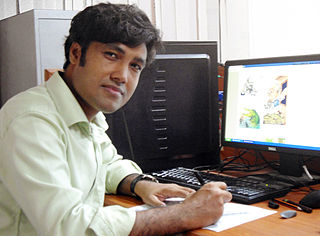
Khalil Rahman is a Bangladeshi political cartoonist. His cartoons have been appearing on the front page of some leading Bengali dailies including Prothom Alo, Jugantor, and Samakal.
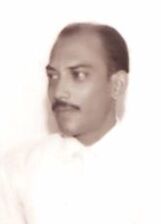
Mubinul Azim (1934-1975) was a Bangladeshi painter who is considered a pioneer in the fine arts scene. He is one of the foremost artists from Bangladesh and a student of Zainul Abedin. He naturally drew inspiration from his own surroundings. His first duo show was held in 1961 followed by 17 solo exhibitions and 37 group exhibitions in Pakistan, Bangladesh and different countries of the world. Out of his 54 painting exhibitions, only 14 took place in Bangladesh. He received awards at the Annual Exhibition of Paintings by Karachi Artists, Arts Council, Karachi, Pakistan in 1963, 1964 and 1967.

Hamiduzzaman Khan is a Bangladeshi artist and sculptor. He is well known as a sculptor for his theme and form oriented sculptures, in particular sculptures on the theme of Bangladesh War of Liberation and birds. Following the introduction of modernity in sculpture in Bangladesh in the 1950s by Novera Ahmed, Khan was instrumental in the popularization of sculpture in the country through his distinctive form of modernity. Influenced by Alberto Giacometti and Henry Moore, his works manifest expressionism, minimalism, and a constant exploration of purity of material. He worked on both figurative as well as abstract genres.
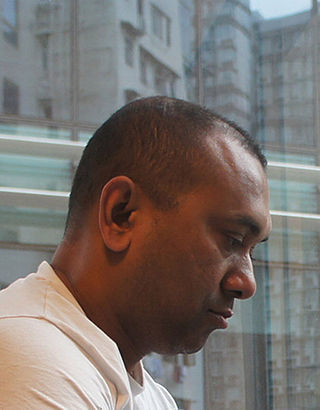
Firoz Mahmud is a Bangladeshi visual artist based in Japan. He was the first Bangladeshi fellow artist in research at Rijksakademie Van Beeldende Kunsten in Amsterdam. Mahmud's work has been exhibited at the following biennales: Sharjah Biennale, the first Bangkok Art Biennale, at the Dhaka Art Summit, Setouchi Triennale (BDP), the first Aichi Triennial, the Congo Biennale, the first Lahore Biennale, the Cairo Biennale, the Echigo-Tsumari Triennial, and the Asian Biennale.
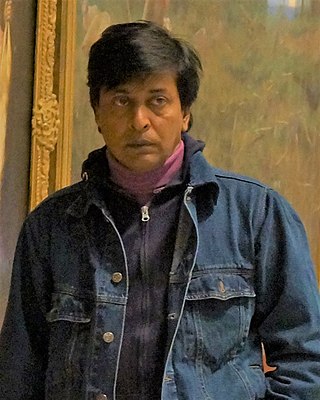
Shyamal Krishna Bashak is a Bangladeshi artist, and served as senior artist cum audio-visual officer of the National Museum of Science and Technology in Bangladesh for 20 years, and was previously chief artist of daily newspaper Bhorer Kagoj.
Syeda Marium Gulshan Hossain is a painter and installation artist based in Dhaka, Bangladesh. Her work has been exhibited extensively. She currently serves as an Assistant Professor of the Department of Painting at University of Development Alternative Dhaka and is a member of the International Miniature Art Society of Florida, USA.
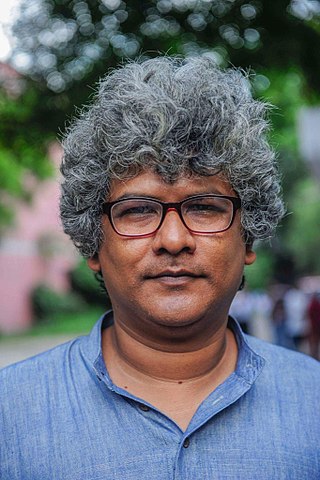
Najib Tareque, is a Bengali artist, printmaker and writer based on Dhaka, Bangladesh. He is best known for his New media artworks and one of the pioneers of online art galleries in Bangladesh. Tareque was the founding member of Jolrong, one of the first online art galleries in South Asia. Since 1987, he has been part of various group and solo exhibitions both in the country and abroad. He participates more than twenty individual and joint exhibitions in the country and abroad.
Jamal Uddin Ahmed is a Bangladeshi artist and professor. In recognition of his contribution to fine arts, the government of Bangladesh awarded him the country's second highest civilian award Ekushey Padak in 2019.

Md Nazmul Haque Bappy is a Bangladeshi director, and painter. He has received several awards, including Berger Paints Award UNAIDS Grand Award, China Bangladesh Friendship Award, Grand Award in International Korean Art Festival, Award in Art Are-China Exhibition.















